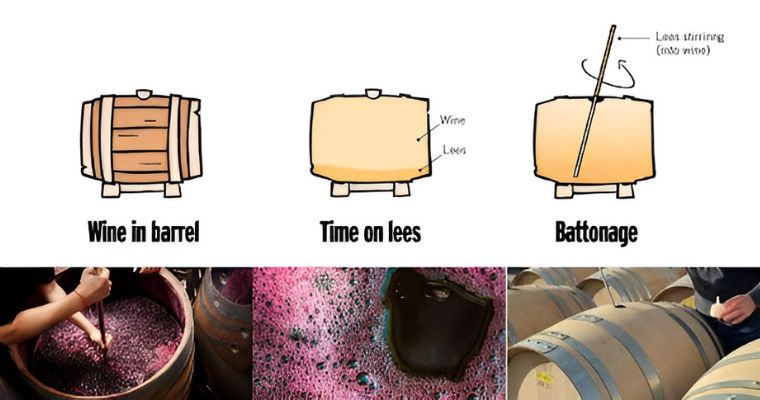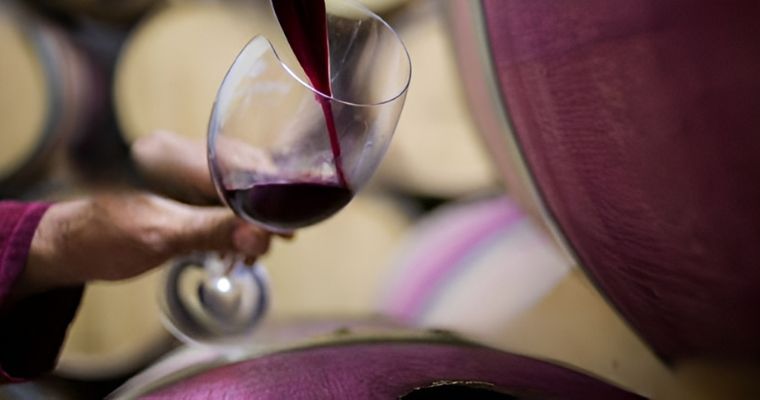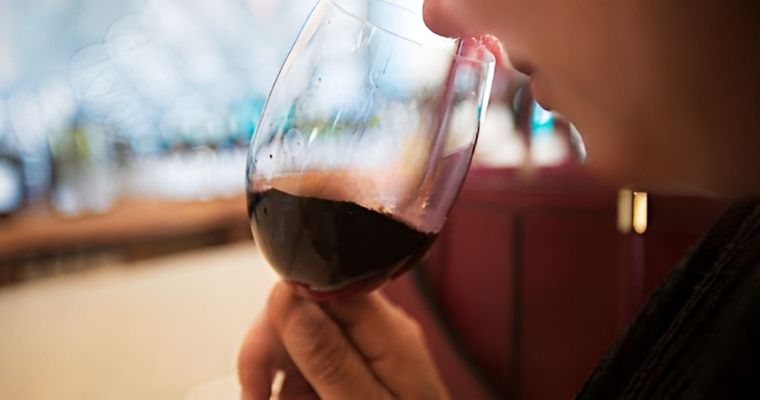Early Bird
Deadline
January 31, 2026
Judging
Date
May 18, 2026
Winners
Announced
June 10, 2026

One such crucial element that often remains hidden from the limelight but plays a pivotal role in wine maturation is yeast lees. These microscopic particles, a product of fermentation, are more than just sediments at the bottom of a barrel or bottle. They hold within them a complex dance of chemistry and flavor development that deserves the attention of every discerning sommelier.
Yeast lees, often referred to as lees or sediment, are the remnants of yeast cells, grape solids, and other compounds that precipitate during the fermentation and aging processes. Initially, they might be viewed as mere byproducts of fermentation, but their presence can significantly influence a wine's character, texture, and flavor profile as it matures.

(Image source: Pinterest and Wine enthusiast)
One of the most remarkable roles yeast lees play is in enhancing the complexity of a wine's flavor profile. As yeast cells break down during fermentation, they release various compounds into the wine, including amino acids, lipids, and polysaccharides. These compounds contribute to the wine's mouthfeel, body, and overall taste.
For instance, polysaccharides released from yeast cells contribute to a wine's viscosity and can even impart a creamy texture. These compounds can interact with phenolic compounds from grape skins, influencing a wine's structure and tannin integration. The delicate balance of these interactions is a dance that, when guided skillfully, can elevate a wine's sensory experience.

(Image source: iStockPhoto)
Aromatics and Bouquet Enhancement
Yeast lees are also known to have a substantial impact on a wine's aromatic profile. During extended contact with the lees, certain chemical reactions take place that result in the development of desirable aromas. For example, autolysis—a process where yeast cells break down—can yield compounds like mannoproteins that contribute to fruity and floral aromas in the wine.
Champagne, a quintessential example of this phenomenon, owes much of its distinctive biscuit and brioche aromas to prolonged aging on yeast lees during the traditional méthode champenoise (aka traditional method). As sommeliers, being attuned to these nuances allows you to guide your patrons toward wines with a richer aromatic tapestry.

(Image source: iStockPhoto)
The influence of yeast lees on a wine's texture and mouthfeel should not be underestimated. Wines that have undergone lees aging tend to exhibit a silkier, rounder mouthfeel, often accompanied by a sense of depth. This textural enhancement can play a crucial role in harmonizing a wine's components, creating a seamless integration between acidity, tannins, and flavors.
Yeast lees are particularly valuable during the maturation process, offering winemakers an alternative approach to crafting balanced wines. The slow release of compounds during lees aging can serve as a counterbalance to the potentially excessive influence of oak. By opting for lees aging, winemakers can achieve a refined complexity without overwhelming the wine with pronounced wood flavors.
[[relatedPurchasesItems-61]]
As sommeliers, you are not just stewards of wines but also educators and guides to your patrons' wine journeys. Your understanding of yeast lees and their influence on wine maturation positions you to share insights that enrich your patrons' appreciation of the wines they enjoy. This will help sell more wine. Recommending wines that have undergone lees aging, along with explaining the unique characteristics imparted by this process, adds a layer of depth to the wine experience.
When presenting a lees-aged wine, consider highlighting its nuanced aromatics, velvety texture, and balanced structure. Share the story of how these qualities emerged through the careful orchestration of winemaking techniques. Your expertise enhances not only the patrons' enjoyment but also their understanding of the craftsmanship behind each bottle.

(Image source: iStockPhoto)
In sum, yeast lees, often unseen but undeniably influential, are an integral part of the winemaking process. As sommeliers, your knowledge of how these microscopic particles contribute to flavor, texture, and complexity can transform your guests’ appreciation of the wines you present. The interplay between yeast lees and the artistry of winemaking is a narrative that, when shared, elevates the entire wine experience, connecting your patrons to the intricacies of every sip. Let the story of yeast lees be an essential chapter in your journey as a sommelier, adding depth and dimension to the wines you curate and the stories you tell.
Enter your Wines now and get in front of top Sommeliers, Wine Directors, and On-Premise Wine Buyers of USA.
